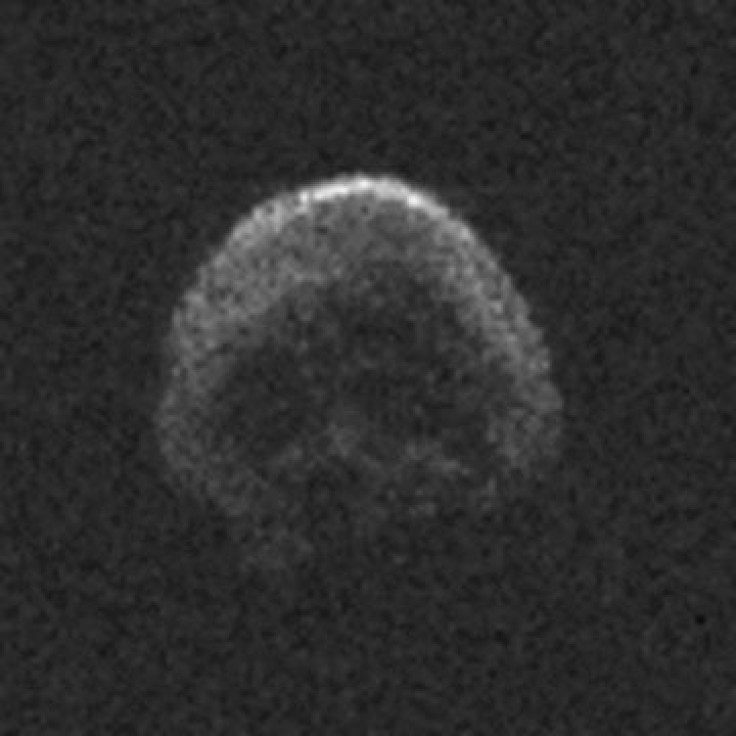Skull-Shaped ‘Dead’ Comet Passes Earth On Halloween

As revelers put the finishing touches on their costumes, and haunted houses nationwide prepared to deliver an evening of fun-spirited fear for customers, the planet itself experienced an eerily close call. A comet shaped like a skull that exhibits striking facelike features zoomed by Earth at relatively close range on Halloween, though it remained far enough away to be more a scientific curiosity than a true threat.

The comet, known as 2015 TB145, passed by at about 302,000 miles away around 1 p.m. EDT Saturday. That is about 60,000 miles farther than the moon is from Earth. It sped past at a clip of 78,000 mph.
The space rock is a “dead” comet, which means it is inert and no longer has a visible trail of debris breaking off of it. NASA says the comet is about 2,000 feet wide and constantly rotating, completing a turn about once every five hours. CNN reports it is the closest an object of that size will come to Earth until 2027.
The comet was discovered Oct. 10 by scientists at the University of Hawaii. At first, scientists weren’t sure whether the mysterious object was an asteroid or a comet. Asteroids are typically made up of metal and rock, while comets consist of rock, dust and ice.
NASA scientists who observed the rock with the Infrared Telescope Facility on Mauna Kea, Hawaii, calculated that its surface reflected about six percent of the light that hits it from the sun. That’s not too far outside the normal range of comets, which typically reflect about 3 to 5 percent of the sun’s light. But since there was no evident tail, the team concluded that the specimen was most likely a dead comet.
NASA keeps close watch for asteroids, comets and space debris that strays too close to Earth, though humans have no real mechanism to divert asteroids if they were to catapult toward the planet. The agency is working on an Asteroid Redirect Mission that aims to send a robot to collect a boulder from a nearby asteroid and put it into orbit around the moon. NASA will then use it as a laboratory, sending astronauts to explore it and complete exercises that will prepare them for a human mission to Mars in the 2030s.
© Copyright IBTimes 2024. All rights reserved.












